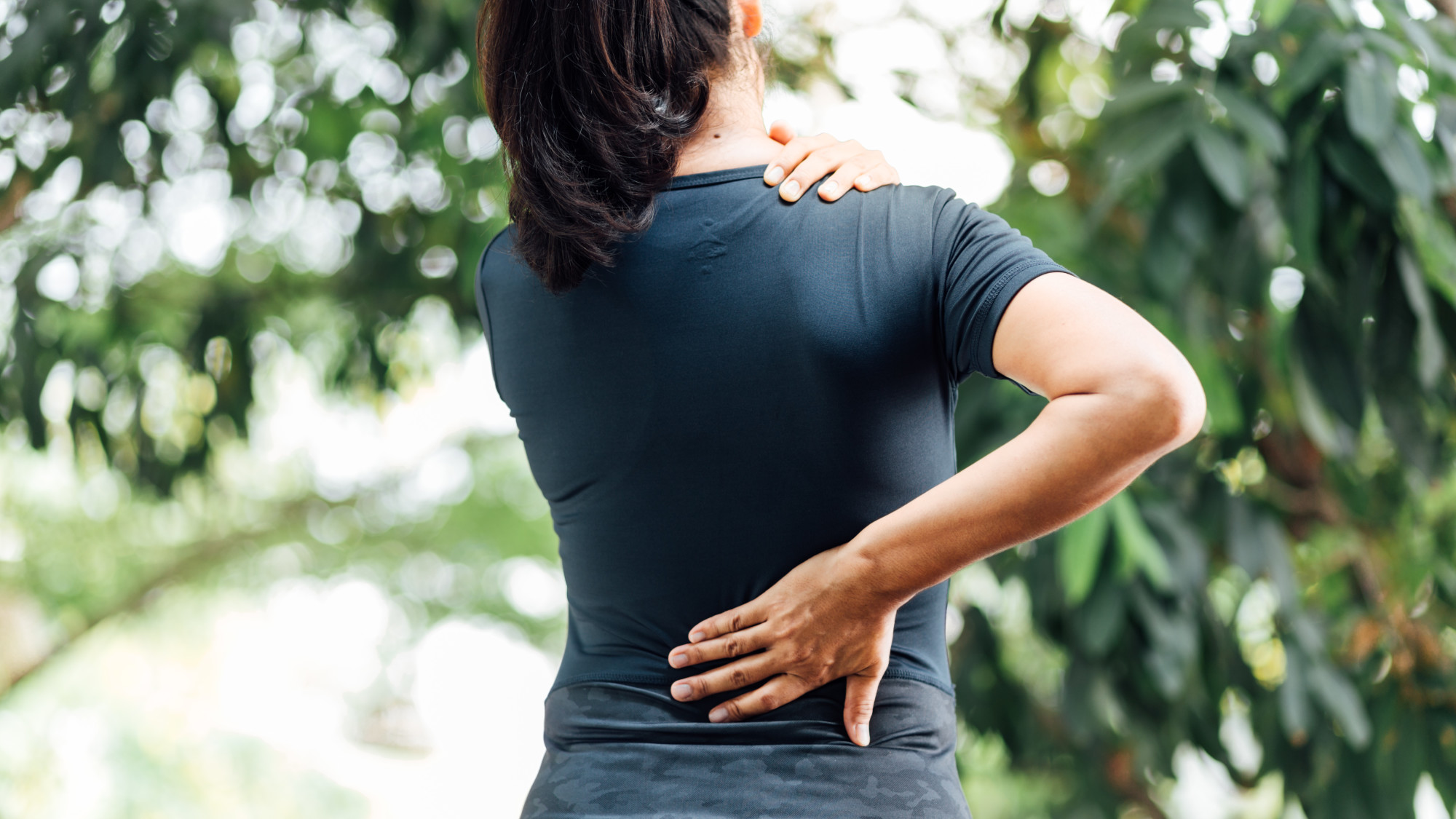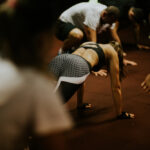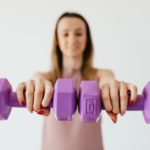What Are the Best Ways to Relieve Sore Muscles?

Did you know that DOMS or delayed onset muscle soreness typically affects people 24 to 48 hours after a hard or new workout?
If you’ve noticed that your muscles are tight or stiff, or even inflamed, you may have been experiencing DOMS. Many times if your muscles are sore, you can’t perform at the same level. While many people experience muscle soreness, you shouldn’t have to be in pain.
There are several ways to help reduce and relieve sore muscles. In this article, we are going to tell you the best ways to feel better after a workout so you can keep moving as usual.
Causes Of Sore Muscles
There are several reasons why your muscles may be sore. It doesn’t always mean you’ve injured yourself, even though it may feel like that at times.
If you switch up your workout routine or perform a movement your body isn’t accustomed to, you’ll feel some discomfort. For example, if you’re used to weightlifting and then you go on a long hike, you may feel soreness the next day in your legs.
If you change the intensity of your workout, you’ll also likely have some soreness. Another example would be if you’re used to doing long-distance runs and then decide to do uphill sprints.
Foam Rolling
Foam rolling is a type of self-massage that can really help with muscle stiffness. The great thing about foam rolling is you can use the technique before or after your workout.
It can be a great way to warm up your muscles and help them post workout. There are a few different types of foam rollers that you can choose from.
There’s a soft, firm, grid, or deep tissue rollers. There’s also a vibrating roller that is similar to a deep tissue massage. Each serves a different purpose. If you’ve never used a foam roller, it’s best to use a softer one.
Foam rolling can be a little intense and it may be slightly painful, but your muscles will feel better later. You can use a foam roller anytime and as much as you want.
You can also use a massage gun. Typically, these machines will have different levels, so you can find the right strength and speed for you. It works in the same way a foam roller does. It will allow you to focus on one area.
Ice and Heat Therapy
People continue to debate if ice or heat therapy is better. Knowing the differences between the two will help you decide which one is best for you. You may even want to use a combination of both.
Icing your muscles can help slow down blood circulation, which can help reduce swelling. It’s recommended that you use ice for new pain. Ice baths right after an intense workout can help your muscle soreness for up to 24 hours.
Heat therapy will increase your blood circulation, which can also help with muscle recovery. If you use a heating pad, you’ll feel the effects for longer than 24 hours. Regularly alternating heat and ice therapy can be extremely beneficial for your muscle pain.
Change Your Diet
Changing your diet may not be the first thing you want to do, but your muscles will thank you if you do. Turmeric is a spice that acts as an anti-inflammatory.
Nuts, cottage cheese, and seeds are another food that can help relieve sore muscles. There isn’t one magic food that will take all your pain away. Having a balanced diet full of protein, fats, carbs, and micronutrients is key. Your body needs all the nutrients to recover.
You’ll also have an easier time building muscle if you eat a variety of foods and vitamins. A common myth that many people believe is that you need to eat or drink protein right after your workout. However, you don’t need to chug a protein shake right after exercise; just be sure to get enough throughout the day.
Many professionals use tart cherry juice to combat DOMS as well. If you’re looking to reach your goals as efficiently as possible, working with a coach is going to be the best way to go. Someone who is licensed and certified will be able to tell you the best foods to add to your diet for recovery.
Supplements
We know changing your diet can be challenging and if you have allergies it may be even harder. You purchase supplements that can help you get all the vitamins and nutrients that you need that you don’t get from food.
Stay Hydrated
It’s crucial to drink a lot of water. Your muscles will recover and heal a lot faster if they are hydrated. If you’re dehydrated your muscles will tell you.
Water will help move waste out of your body and help move nutrients to the right place in your muscles. Drink water before, after, and during your workout.
You’ll cramp more and your body will stay sore for longer. The pain will also be worse. You can also drink electrolytes to improve your hydration.
Prioritize Sleep
It may not seem important, but sleep is essential, especially when you’re using so much energy throughout the day. Your body needs rest to recover; if you don’t prioritize sleep, you’ll be slow-moving and in more pain. You’ve probably heard that seven to eight hours of sleep is ideal for an adult; if your training is really hard, you may need more than the average person.
Be sure to take a rest day too. Working out every day isn’t going to get you closer to your goals. It will actually do the opposite.
Your muscles and joints need time to heal and grow. If you get the proper amount of sleep, you will have more energy for your next workout session. Your brain will also be functioning better and you’ll have more focus. You’ll be more prepared for your training if you get a good night’s sleep.
Listen To Your Body
You won’t always be motivated to work out and there will be days when you have to push yourself to get there. While part of growing is pushing yourself, it’s important to listen to your body.
There may be days when you have to take an unexpected rest day, so you can prioritize your health. There’s more to being healthy than just going to the gym. If you push your body too hard, you’ll have a harder time recovering.
Get A Sports Massage
If you don’t enjoy foam rollers or if you need extra muscle recovery, you can get a massage from a professional. The pressure and movement can help the blood circulate and break up areas of congestion.
The purpose of getting a sports massage is to reduce the inflammation in the muscles, allowing them to recover faster. If you’re training for a race or competition, you may want to schedule a regular appointment to help with your workouts and muscle soreness. You won’t be able to train to your full potential if you’re hurting.
Use Essential Oils
Topical ointments and essential oils are so beneficial if you’re trying to relieve muscle soreness. Icy Hot and Tiger Balm are two popular topical creams that can help your muscles feel better instantly. They can be irritating to the skin so be sure to test them out first. Not everyone feels relief from these topicals. If they don’t work for you, don’t use them. As you can see there are many other methods.
Lavender, peppermint, and rosemary oils are also great options. Be sure to dilute them with a carrier oil so they don’t bother your skin. They will have a similar effect as the other topicals, but not as strong.
Stretch Properly
One of the best tips for working out is to warm up and stretch properly. You don’t want to shock your muscles at the beginning of your workout. Before you start your workout, you should spend time doing dynamic stretches.
Keep your muscles and joints moving. Leg swings, lunges, and arm circles are all examples of dynamic stretches.
These warm-up stretches will also get your heart and blood moving faster, preparing you for the rest of your workout. After your workout, static stretching is recommended.
This will help your muscles cool off and relax after your training. You should also try taking a walk after your workout.
It’s crucial that keep moving, and don’t allow yourself to sit for too long. The day after an intense workout, you may be tempted to stay on the couch but that will make you more sore and stiff.
Over The Counter Options
Taking over-the-counter medications can help; however, they can be dangerous and it’s important to talk to your doctor. Ibuprofen and similar meds can help with inflammation and provide relief fairly quickly.
Don’t overuse these over-the-counter meds. Use other methods before skipping to this option.
After training for a while, you’ll begin to understand the difference between muscle soreness and injury pain. If you have an injury, you shouldn’t cover it up by taking OTC meds.
Epsom Salt Baths
Soaking in a bath with Epsom salts can be beneficial as well. Similar to using a heating pad for pain relief, a warm bath will have the same effect. The minerals and salts absorb through the skin and help relax your muscles allowing them to not only feel better in the moment but in the long run too.
Common Questions
You may have a few questions regarding muscle soreness and recovery. DOMS doesn’t equate to progression and muscle growth. You can be making great progress without being sore every time you exercise.
- Can I Workout With Sore Muscles?
- Can I Leave My Muscles To Heal By Themselves?
- Do Sore Muscles Mean I’m Making Progress?
You can work out with sore muscles; however, you may want to opt for a lighter workout after an intense workout day. It may be surprising, but exercise can help relieve some soreness and pain. Your body will get used to the exercises and every time it will be less and less painful until you increase your intensity.
Your muscles will heal on their own if you decide not to follow any of the tips above, but it will take much longer. You won’t see as much progress if you don’t take steps to heal your body. Muscle soreness doesn’t always mean you’re getting stronger.
In order to avoid or lessen your muscle pain, you’ll want to ease into training. If you’ve never deadlifted, you may want to start with other exercises to build up those muscles.
If you’ve taken some time off, due to a busy schedule or an injury, you won’t be able to lift the same amount that you used to. Once you get back into a regular schedule, you’ll notice less and less soreness after each session.
Relieving Sore Muscles
If you’re experiencing sore muscles, know you aren’t alone and there are ways to feel better and heal faster. Implementing the steps above will make a significant difference.
If you enjoy working out and spending time at the gym, you don’t have to miss out because your muscles are sore anymore. We hope these tips will help you relieve sore muscles in the future.
If you’ve been avoiding the gym because you don’t want to be in pain the next day, contact us today! We have more information and you can get a free pass as well.







